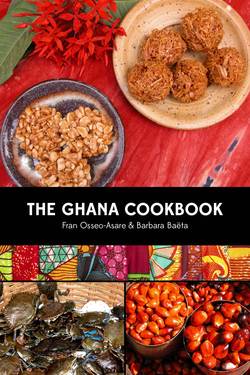Читать книгу The Ghana Cookbook - Fran Osseo-Asare - Страница 7
На сайте Литреса книга снята с продажи.
ОглавлениеPREFACE
by Fran Osseo-Asare
The Akan people of West Africa recognize what great cooks everywhere know: the secret to good cooking lies in the quality of the ingredients. As they understand in Ghana: “the good soup comes from the good earth” (Twi: “nkwan bεyε dε a, efi fam”).
Let me begin by acknowledging that this book bends several cardinal cookbook rules: some recipes include unfamiliar or exotic ingredients (but with substitutions given where possible), and though many of the recipes are quick and easy, some are not. This book is an unrepentant celebration of West African Ghana’s vibrant cuisine and culture. While the book serves as a basic cooking course guiding anyone who wishes to delve more deeply into Ghana’s (or West Africa’s) culinary cultures, it is also a handy step-by-step cookbook for those with a more casual interest.
Ghana’s exuberant cooking is attractive on many levels: the food is fresh, delicious, healthy, economical, user-friendly, varied, efficient, and flexible. Over the years, my appreciation and enthusiasm for it have only deepened.
I agree with the South African food writer Laurens van der Post who wrote in the 1970s that the cuisine of the rising middle classes in West Africa exhibits “… a kind of morning freshness, their taste is exhilarating and exploratory and their inventiveness lively. And their meals stimulate not only the palate but the mind as well; some of the best conversations I have ever had have taken place over food eaten with West African friends.”1
North Americans continue to explore and embrace new foods, especially ethnic cuisines. The emphases on lighter cooking with more vegetables and complex carbohydrates and less meat, on timesaving meal preparation (while simultaneously rethinking the need for speed via the “slow foods” movement), and on interesting new combinations of foods and seasonings continue to embolden us to broaden our culinary horizons, and to scrutinize some of our prior stereotypes. We have shown ourselves quite open to borrowing and adapting foods from a variety of cultures.
Many books have been written on Caribbean, Cajun, Brazilian, and African-American cooking, all referring vaguely to “African influences.” There is also a crop of encyclopedic African or African Diaspora cookbooks, which while fascinating and needed, can overwhelm someone new to the subject. Finally, the flood of international cookbooks, or specialty cookbooks, such as those on hot and spicy foods, offer African recipes with great unevenness in authenticity. Too often books treat the continent and islands of Africa, numbering well over fifty countries, as a single entity, when even within one country like Ghana there are ten regions with cuisines reflecting distinctive geographies, ingredients, cultures, and histories. While most people recognize such variation in other parts of the world, they tend to overlook it in Africa.
This cookbook is for adventurous but inexperienced cooks who are interested in trying new cuisines; for those who like to cook but are pressed for time or might be on a tight budget; for people who have enjoyed some West African food and want to try their hand at cooking it. And what about folks on gluten-free or sugar-free or dairy-free diets? Or those who follow the slow-foods movement? This cookbook is for them as well.
The Ghana Cookbook is designed as an introductory, but comprehensive, cooking course that builds on basic flavors, textures, and cooking principles, and seasons them with stories, photography, and cultural explanations. This project is the culmination of over four decades of learning on my part, including more than ten years of collaboration with my distinguished partner Barbara Baëta. Though I do the writing and speak in my own voice, Barbara’s profound influence and experience are evident throughout the book.
Now, we warmly welcome you to our kitchen. As we say in Ghana, “Akwaaba!” (“Welcome!”)
1 van der Post, Laurens, and editors of Time-Life Books. African Cooking. New York: Time-Life Books, 1970, p. 62
